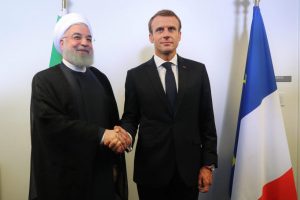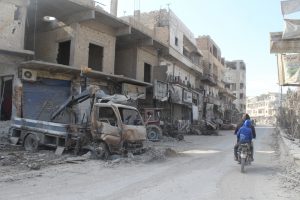by Wayne White
Continuing extremist attacks in northern Mali are a reminder that this vast Saharan region, given to raiding and smuggling for more than a millennium, could remain an attractive haven even for a much weakened al-Qaeda in the Islamic Magreb (AQIM). Now that sweeping French and allied African military operations have decimated AQIM’s larger forces and driven surviving AQIM bands to switch to localized terrorist assaults, concerned parties have shifted their priorities toward more enduring counterinsurgency operations and peacekeeping. Yet, those seeking to deal further, lasting blows to AQIM must remain mindful of the ethnic complexity of the Malian Sahara.
Demonstrating it is still a force to be reckoned with, AQIM claimed responsibility for another attack on the northern Malian city of Timbuktu over the weekend. A checkpoint outside the city was bombed as a diversion to enable more than 20 fighters to infiltrate the city while defenders rushed first to the site of the bombing. A few infiltrators managed to gain brief access to the grounds of the Hotel Colombe (frequented by journalists and aid workers), possibly a prime target. The local Malian governor and his staff at the hotel had to be evacuated hastily amidst efforts to hunt down the infiltrators. One Malian soldier was killed; several Malian troops and one French soldier were wounded. A probable AQIM land mine placed on a road also recently inflicted casualties on African forces participating in operations in support of the Malian government.
Given the sheer size of the largely ungoverned northern third of the country, plus some of its forbidding terrain, most likely it would be impossible to fully eradicate AQIM, especially since small groups could take refuge in similarly trackless areas of neighboring Niger, Mauritania or Algeria from which they could continue such attacks. Consequently, all parties involved in addressing the problem are wisely shifting to more drawn-out strategies.
French President Francois Hollande said late last week that French troops (originally slated for withdrawal after a few months) will now stay through the end of the year in limited numbers, and has offered 1,000 troops to stay even longer as part of a hoped-for UN peacekeeping operation. He reiterated the latter on April 4. Meanwhile, the European Union has begun the first phase of a 15-month training operation under the guidance of military personnel from 7 EU countries with an initial contingent of Malian army trainees. The EU training mission eventually is slated to field 500 such trainers. On a mission to the Malian capital of Bamako on April 2, Senator John McCain said the US also would explore ways of providing equipment and training to assist the EU mission and technology to support the French efforts to help run down AQIM elements still at large. Intelligence sharing among the US, the UK, France and key EU governments on AQIM-related developments undoubtedly will expand.
Last week UN Secretary-General Ban Ki-moon called upon the Security Council to authorize the transformation of the various African forces in Mali along with additional police assets into a UN peacekeeping force of over 12,000 (that the French could then bolster with troops of their own). Ban cited the challenge posed by AQIM’s “residual threat” as justification for the deployment of such a force in being. Clearly, statements by Hollande, Ban and McCain illustrate the international community has become more resigned to a continued presence in Mali to provide the Malian government a reasonable chance to bounce back from the recent AQIM challenge.
To head off potential trouble on a closely related front, however, both Malian authorities and their foreign allies must tread carefully around longstanding tensions between the Tuareg Berber population of the Saharan north and Mali’s dominant, sub-Saharan African peoples of the south. The Tuareg National Movement for the Liberation of the Azawad (NMLA), although wary — even hostile — toward AQIM, vainly attempted to coexist with AQIM as the latter embarked on its offensive against Malian government forces last year. With the AQIM routed by the French, the more secular NMLA last week named its own civil administrator for the key northern regional capital of Kidal; the NMLA and its core Tuareg constituency remain deeply suspicious — even hostile — toward Malian troops and central governance.
Those hoping to bring as much stability as possible to the situation in northern Mali must bear in mind that not only was there a protracted Tuareg rebellion in both Mali and Niger during 2007-2009, but what morphed into the AQIM power grab in Mali late last year started with an NMLA revolt in northern Mali in January 2012. At least some AQIM cadres probably are Tuareg; other Tuareg who are not, but participated in the Libyan civil war, likely remain especially restive. Yet, the Tuareg are far more knowledgeable than any others about the wild Saharan terrain in which many AQIM cadres have sought shelter, and could assist foreign — and perhaps even Malian — forces root out AQIM remnants. But that may well require serious concessions, perhaps toward a measure of self-governance, to address longstanding northern grievances.





